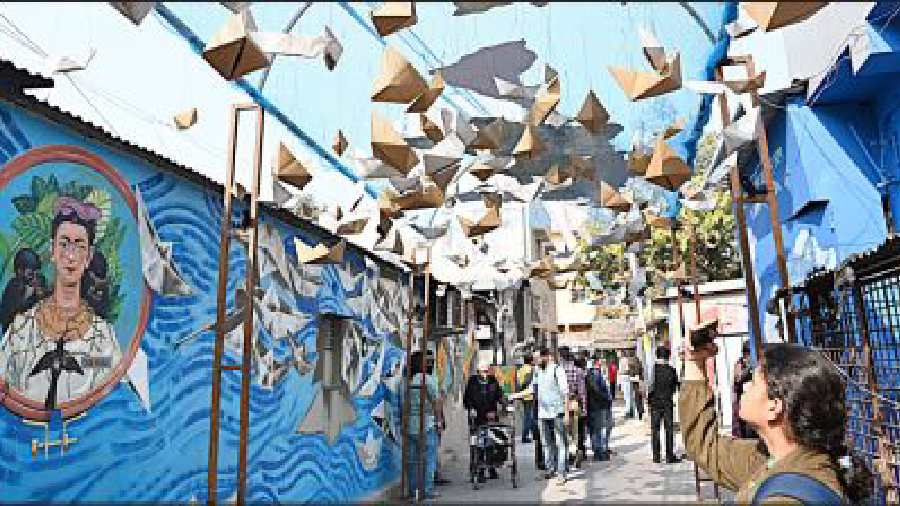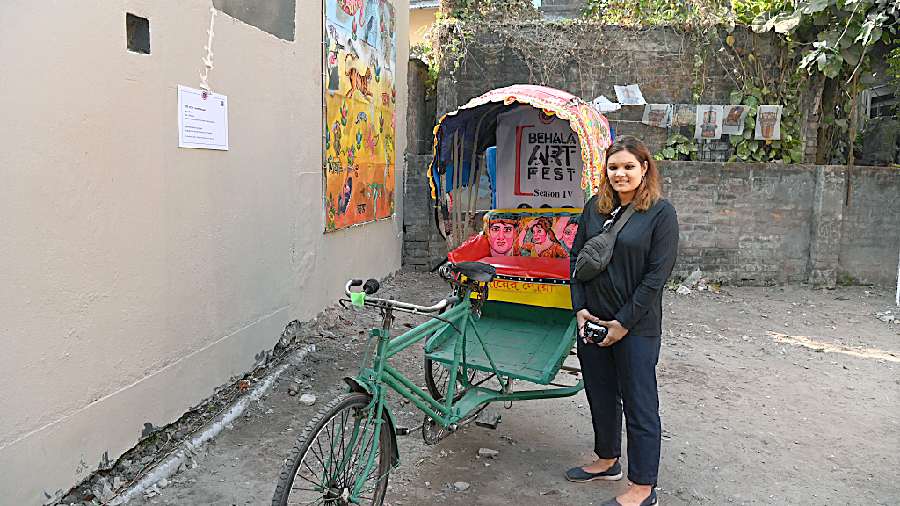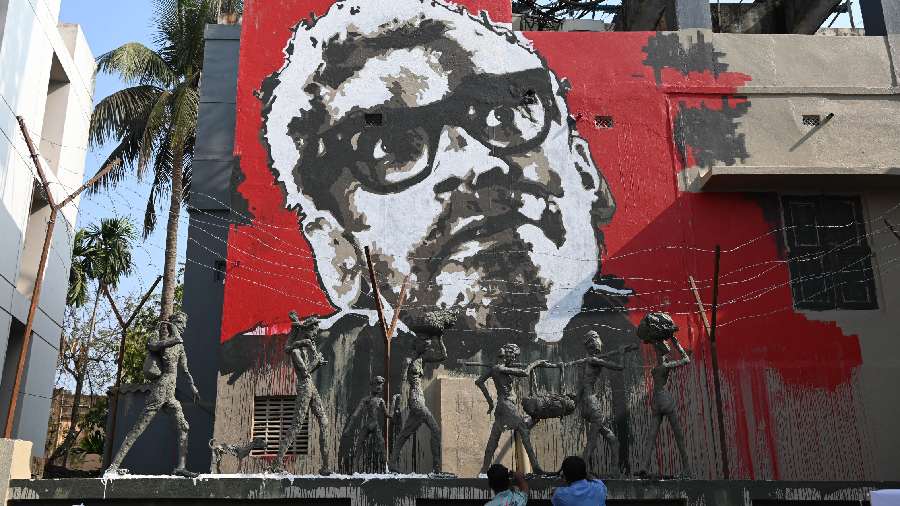A busy neighbourhood in Behala, dotted with shops and houses, has turned into a canvas for a street art festival.
Walls and facades on Rai Bahadur Road, about 100m off Diamond Harbour Road, near the No. 14 bus stand, have been painted and over a dozen installations set up for the Behala Art Fest.
The graffiti in a bylane has scores of boats and an accompanying installation is made of hundreds of paper boats strung overhead. The exhibit draws from the vessels teeming with refugees fleeing to Europe from conflict-ridden West Asia.
“The refugees are in search of freedom. But the road to freedom is riddled with challenges. They are at the mercy of middlemen who load people like animals on a boat. Many of the refugees don’t make it to safer shores. Freedom, therefore, remains elusive for them,” said Panchali Banerjee, an artist and one of the organisers of the three-day fest, which opened on Friday.

An installation of paper boats, a pointer to many recent tragedies involving refugees on overcrowded vessels
The theme of this year’s festival is “Mukta”, which translates as free or unbound. All the installations and paintings — there are around 20, made by artists from India and abroad — explore freedom or the lack of it.
“Whenever we get liberated or liberate ourselves from the confines of a thought/belief/consciousness, we become associated with another idea or thought... none of us are completely liberated, as that is not possible,” reads a note from Samindranath Majumdar, professor at The Indian College of Arts and Draftsmanship and a co-moderator of the festival.
Another graffiti draws from the lines “Mirror, mirror on the wall, who’s the fairest of them all? (from the story ‘Snow White and the Seven Dwarfs’)”. It is made of a series of paintings, each showing the back of the head of a woman in a mirror.
“The women negate the standard idea of viewership. You see their faces and you start judging them. Women are not always ready to be judged. They are not always dependent on your acceptance. They seek freedom from this stereotype,” said Banerjee.
Melissa Abuga-a, a visual artist from the Philippines, has made an interactive installation. It comprises a set of coloured sheets of paper and a machine that shreds papers. Each visitor is supposed to write a secret — that has not been shared with anybody till date — on a piece of paper and then put it inside the machine.
“As the machine shreds the paper to pieces, you feel lighter. A weight is off your shoulders. You will either be a part of the shredded secret or your secret will be woven into many other shredded secrets,” she said.
The festival is in its fourth year. In the previous editions, burning issues like the CAANRC-NPR and the migrant crisis during the lockdown had found expression in several exhibits.
Artist Sanatan Dinda, convener of the festival from the inaugural edition, said he wanted to challenge the elitism in art. “Many people are scared to go to galleries and museums. Paintings confined to the cold confinements of four walls are not everything about art. We have to reduce the ever-widening distance between art and people,” said Dinda.
As he was speaking, a bunch of students from a south Kolkata school moved around the installations, cameras and notebooks in their hands, accompanied by their art teacher. “They are from Class IX. They had recently tried a mural and faced some difficulties in executing it. They have come here to see and learn,” said the teacher, Utpal Dutta. Amrita Pugalia, one of the students, said visiting the festival was a unique experience. “I have been to galleries and museums. But the experience here is different. It is more interactive,” she said. Promiti Hossain, an artist from Bangladesh, has painted a rickshaw and an aluminium sheet in bright colours and Bengali words like swadhinata (freedom) and bhasha (language).

Promiti Hossain, a Bangladeshi artist, with her installation
“Rickshaw painting, once a thriving art in Bangladesh and best done by the human hand, is moving towards its end with the emergence of digital print. I have tried to celebrate this form,” said Hossain. The facade of a house in one corner of the bylane has a giant painting of filmmaker Ritwik Ghatak. The pangs of the Partition and the theme of homelessness, that have been integral to Ghatak’s work, have inspired several exhibits at the fest.
